News
Altcoin News
Altcoin News
Browse all Altcoin related articles and news. The latest news, analysis, and insights on Altcoin.
What is Toncoin (TON)?
In the crypto world, there are projects that sometimes quietly emerge but then suddenly make a powerful return. Toncoin fits this description perfectly. Behind it lies the shadow of a giant platform like Telegram, a journey reshaped by community support, and a technically ambitious infrastructure. Toncoin is a digital asset we've been hearing a lot about in the crypto world lately. So, what is Toncoin? Simply put, Toncoin is the native cryptocurrency of The Open Network (TON) blockchain. Initially developed by Telegram, this project emerged with the promise of high speed and scalability. In fact, due to the project's origins, Toncoin is sometimes referred to as "Telegram coin." In this guide-like article, we will cover all the details of Toncoin, from its origins to its technical specifications, its use cases, and its future prospects.Toncoin Definition and OriginsToncoin was developed as the native cryptocurrency of The Open Network (TON) blockchain. Launched in 2018 by Telegram founders Pavel and Nikolai Durov, the TON project was initially known as the "Telegram Open Network" and was announced alongside its own cryptocurrency, Gram. The goal was to build a high-speed and scalable Layer-1 blockchain that would support Telegram's hundreds of millions of users. Indeed, thanks to its technical architecture, TON was designed to theoretically serve millions of users. For example, the network structure consists of a masterchain and numerous subchains (workchains) operating beneath it; each subchain can be sharded to create new subchains as needed. This allows TON to achieve unlimited horizontal scalability. TON network architecture. Source: TON Blog In short, the TON blockchain was a revolutionary project, particularly for its time, aiming to fully implement the "sharding blockchain" concept.However, the project faced rocky roads from its very beginnings. Announced in 2018 and generating considerable excitement, the Telegram blockchain project TON faced a block from the US Securities and Exchange Commission (SEC) in 2019. The SEC filed a lawsuit against the project, claiming that the Gram token sale constituted an unregistered security sale. As a result, the Telegram team was forced to withdraw from the project in 2020 after a lengthy legal battle. Telegram released all of its TON-related code as open source, officially ending the Gram coin project.At this point, independent developers and the community entered the scene. Open-source developers, eager to pick up where Telegram left off, adopted the TON codebase and revived the project. The TON Foundation (a non-profit foundation), established in 2021, began supporting the network's development and named its token Toncoin. So, while the name Gram was lost to history, a new community project with the same technological vision came to life under the name Toncoin. Pavel Durov even expressed his support for this new TON project, driven by the community, in a statement in December 2021, calling it "a continuation of our vision."Toncoin's application areas are also quite broad. What are Toncoin's benefits? First, Toncoin aims to be an ideal tool for micropayments, offering both fast transaction confirmation and low fees. Furthermore, NFT trading, decentralized finance (DeFi) applications, and other Web3 services have begun operating on the Toncoin network. For example, once the smart contract infrastructure becomes active on the TON blockchain, NFTs, such as digital collectibles and in-game assets, can be created and traded. Similarly, DeFi protocols such as blockchain-based lending and decentralized exchanges are also developing on TON. Ultimately, Toncoin aims to enable fast, cheap, and user-friendly transactions, enabling the use of crypto in everyday life.Toncoin's History: Key MilestonesLooking at Toncoin's history, several critical milestones stand out. Below, we've summarized the key developments, including Toncoin's launch date, in chronological order:2018: The Telegram team announced the Telegram Open Network (TON) and its native token, Gram. Approximately $1.7 billion was raised in private sales for the project. This was one of the largest fundraisings in the crypto world to date, and Gram, also known as the "Pavel Durov coin," generated significant buzz.2020: Following a lawsuit filed by the US SEC, Telegram halted the TON project. Due to the SEC's block, the Gram token distribution was canceled, and Telegram withdrew from the project, returning $1.2 billion to investors. As of June 2020, Telegram's official TON journey ended.2021: Following Telegram's withdrawal, the open-source community took over the project. Led by developers such as Anatoliy Makosov and Kirill Emelyanenko, the TON Foundation was established, and the network was revitalized. With this newfound momentum, the token was named Toncoin. By the end of the year, the Toncoin network had gained strength with the support of Pavel Durov.2022: Important technical features and products were launched on the TON blockchain. The network began fully implementing staking with a Proof-of-Stake consensus mechanism. Developers created NFT marketplaces and collections on TON, and the first smart contracts became operational. In July 2022, TON DNS was announced, and human-readable domain names with the .ton extension were auctioned. Later that year, TON Storage, a decentralized file storage solution, was launched.2024: The Telegram and TON ecosystems reconnected, and integration steps were taken. The Toncoin wallet and Web3 features began to be integrated within the Telegram app. Telegram's mini apps platform, in particular, has evolved into a platform for running blockchain-based applications called TON Mini Apps. By the end of 2023, Telegram adopted the TON blockchain as its official Web3 infrastructure, and this integration was rolled out to the masses throughout 2024. As a result, TON-based mini apps became widespread within Telegram and reached millions of users. Indeed, by July 2024, mini apps on Telegram had reached 500 million monthly users. "Mini apps" on Telegram 2025: In April 2025, the TON Foundation appointed former MoonPay CFO/COO Maximilian Crown as its new CEO. In July 2025, the TON Foundation announced its goal of raising $400 million in investment to create a crypto treasury company with the globally recognized Kingsway Capital Partner. Network performance also improved in the first half of 2025, with the number of active addresses increasing by 5%. Meanwhile, STON.fi emerged as the largest dApp on the TON network, receiving a $9.5 million investment led by Ribbit Capital and CoinFund. First Digital USD (FDUSD) stablecoin was integrated into the TON network as its native stablecoin. Ethena’s USD e-Boost campaign launched the opportunity to earn up to 20% APY on tsUSDe tokens across four DeFi platforms. Also in July 2025, Telegram added native TON Wallet support in the US; Users can now access their own wallet within Telegram, conduct transactions, and stake transactions.Why is Toncoin Valuable?There are several key technical features and advantages that underlie the popularity of the Toncoin project. First and foremost, the TON blockchain boasts impressive performance in terms of speed and scalability. During a public test conducted in 2023, the TON network broke a world record among existing blockchains by processing approximately 104,715 transactions per second. Furthermore, this test demonstrated that the network has not yet reached its full capacity; with sufficient nodes, it is stated that it could theoretically reach millions of TPS. This extraordinary speed and capacity are among the key factors that make Toncoin valuable. We have listed Toncoin's key advantages below:High transaction speedThe TON network's architecture is designed to process hundreds of thousands of transactions per second. Thanks to dynamic sharding, when the network load increases, new chains are activated to process transactions in parallel. Indeed, in practical tests, TPS exceeding 100,000 have been achieved. This speed makes TON extremely suitable for financial transactions and micropayments. Table comparing transaction speeds of TON and other major blockchains. Source: TON Blog Scalability with ShardingSharding technology allows TON to scale horizontally. Instead of a single blockchain, the network is divided into multiple interconnected subchains. As load increases, new shardchains are automatically created to distribute the load. When load decreases, the shards merge again. This allows for flexible performance scaling and prevents network congestion. Rich Web3 InfrastructureThe Toncoin ecosystem isn't just about cryptocurrency transfers; it also offers comprehensive Web3 solutions. For example, TON DNS is a domain name system that makes blockchain addresses human-readable (e.g., user.address.ton). TON Storage operates as a decentralized cloud storage service, allowing files to be stored on a distributed network. TON Proxy provides a Tor-like privacy layer that aims to anonymize internet traffic.Telegram IntegrationAnother aspect that makes Toncoin unique is its access to the user base of a massive platform like Telegram. As of September 2023, TON was officially positioned as Telegram's Web3 infrastructure. This means the Toncoin wallet is embedded within the Telegram app, allowing crypto transfers without leaving the chat screen. Telegram currently has over 900 million active users, and TON is the only blockchain network capable of reaching this audience. For example, it's possible to tip with Toncoin while chatting on Telegram, pay for channel subscriptions, or earn money by playing games. Thanks to this integration, Toncoin has gained a tremendous advantage in integrating crypto into daily life.Low transaction fees and a user-friendly experienceTransaction fees on the TON blockchain are extremely low, and fees remain predictable regardless of network congestion. An average block time of around 5-6 seconds means near-instant confirmation. Users can use simple names (thanks to TON DNS) instead of complex wallet addresses, and a natural experience within the Telegram interface also lowers the barrier to use. In short, TON aims to make Web3 as easy as Web2, fostering widespread crypto adoption. Particularly driven by Telegram's influence, there's considerable optimism within the community about the future of TON coin.For those unfamiliar with concepts like TON DNS and TON Storage, let's briefly explain. TON DNS is a system that translates long, complex crypto addresses into readable short names, similar to internet domain names (for example, domain names like alice.ton correspond to wallet addresses). What is TON Storage? It's a decentralized file storage network running on the TON blockchain, allowing you to securely store your files in a distributed manner. Similarly, TON Proxy can be thought of as a proxy/anonymity layer that hides users' IP addresses, providing more private and secure internet access. Each of these components is a key component that enhances the value of the Toncoin ecosystem. The most important components of the TON ecosystem Who is the Founder of Toncoin?So, who owns Toncoin? The answer to this question should be considered by considering the project's two distinct periods. The founders of the TON network and its initial token model are Pavel Durov and his brother Nikolai Durov, who are also founders of the popular messaging platform Telegram. They were the ones who conceptualized the TON project and announced the Gram token plan in 2018. Nikolai Durov is also known as the author of TON's technical whitepapers; in short, we can call it TON's original architect. Therefore, the Durov brothers' vision lies at the heart of Toncoin (hence the term "Pavel Durov coin" in the industry).However, after the SEC block in 2020, the Durov brothers withdrew from the project entirely, and Telegram halted all TON-related work. From this point on, the community, rather than any specific individual, became the primary figure as Toncoin's founder. The open-source code left by Telegram was entrusted to independent developers. The team continuing the project after 2020 consists of open-source developers and volunteers from the TON community from around the world. To support this volunteer effort with an institutional structure, the Switzerland-based TON Foundation was established in 2021. The TON Foundation continues to operate actively today as an umbrella organization that coordinates and finances the network's development activities.Currently, the Toncoin network is operated in a decentralized manner by global validators. This means that neither Telegram nor the TON Foundation control the network alone; decisions are made by the community and the validators. Even when Telegram founder Pavel Durov was briefly detained in 2024, the TON blockchain continued to operate without any interruption.Pavel Durov's involvement with the TON blockchain can be explained by the following points:2018 → Telegram announced the TON (Telegram Open Network) project and the Gram token.2019 → The US Securities and Exchange Commission (SEC) filed a lawsuit against Telegram.2020 → Telegram withdrew from the project; the Gram token was canceled. Pavel Durov announced that they had returned investors their funds and ended the project.2021 → Independent developers revived TON and launched it under the name Toncoin.December 2021 → Pavel Durov announced his support for the new TON project, maintained by the community.2023 → Telegram resumed its collaboration with the TON Foundation. Toncoin began to be integrated into Telegram's Web3 infrastructure.2024 → TON Wallet was integrated into the Telegram app, and mini-apps began to be built on TON.2025 → Staking, transfers, and Web3 transactions became widespread and available to users on Telegram.Frequently Asked Questions (FAQ)Below are some frequently asked questions and answers about Toncoin:What is Toncoin and why is it important?: Toncoin is the native cryptocurrency of The Open Network (TON) blockchain. This coin's importance stems from its ability to integrate with a major platform like Telegram and its potential to bring blockchain technology to millions of users. In other words, Toncoin is notable for its advanced technical features (speed, scalability, and low fees) while also being seen as a significant project that will accelerate crypto adoption by finding a practical application in daily life through Telegram.How did Toncoin come about?: Toncoin's origins stem from the TON (Telegram Open Network) project announced by Telegram in 2018. Designed by Pavel and Nikolai Durov, this project was initially planned to launch with a token called Gram, but was halted by an SEC block in 2020. After Telegram's withdrawal, independent developers took over the code and relaunched the network under the name Toncoin in 2021. In short, Toncoin was born from the community's continuation of the vision initiated and left by Telegram.What is the relationship between Toncoin and Telegram?: There is an organic connection between Toncoin and Telegram. First of all, the Toncoin project is rooted in Telegram's vision, as it was initiated by the founders of Telegram. Today, Telegram has integrated Toncoin and the TON network into its ecosystem. For example, you can use the Toncoin wallet (TON Wallet) within the Telegram app, send Toncoin without leaving chats, or run TON-based mini-apps. In short, Telegram adopted TON as its blockchain infrastructure, and Toncoin has become a cryptocurrency that reaches millions of users through Telegram. This integration creates a win-win situation for both parties: Telegram users gain easy access to crypto services, while Toncoin gains a large user base.Is Toncoin centralized or decentralized?: The Toncoin network is decentralized. While initially developed by Telegram, the network is now controlled by thousands of validators and community management spread across the globe. Toncoin's consensus mechanism, Proof-of-Stake, ensures the participation of many independent validators to secure the network. Telegram does not directly manage the network; in fact, it continues to operate the TON blockchain independently of Telegram. For example, even when Telegram founder Pavel Durov faced a brief legal dispute in 2024, the TON network continued to operate without interruption. This demonstrates that the network is not dependent on a single person or central authority; rather, it has a distributed structure.How does Toncoin differ from networks like Ethereum?: There are several key differences between Toncoin (TON) and Ethereum. First, TON is sharding-based by design, providing higher transaction capacity and speed. Ethereum, on the other hand (despite updates), still largely addresses its scaling issues with second-layer (Layer-2) solutions and can only manage a limited number of transactions on a single chain. The second key difference lies in user experience and integration. Toncoin's integration with Telegram allows users to use crypto without the hassle of specialized wallets, browser extensions, or long addresses. Ethereum-based applications, on the other hand, typically require external wallets like MetaMask, complex interfaces, and gas fee calculations. Furthermore, compared to transaction fees, gas fees on TON are much lower and designed to remain stable. In summary, while Ethereum is the leader among first-generation smart contract platforms, TON differentiates itself by offering a faster, cheaper, and more user-friendly alternative, offering a more mass-market solution. It's also worth noting that Ethereum has a more established ecosystem and a large developer community—though TON also has a rapidly growing ecosystem.How to develop an application on the TON network: Developing an application on the TON network involves several different paths for developers. First, you can develop decentralized applications (dApps) directly on the TON blockchain by writing smart contracts. TON offers specialized languages like FunC and Fift for smart contracts that run on its own virtual machine (TVM); higher-level languages like Tact are also available to simplify the developer experience. The second option is to use the Telegram Mini App platform. Telegram mini apps are lightweight applications that can interact with the TON blockchain. For example, after developing a Telegram bot or mini app, you can connect it to TON wallets using the TON Connect protocol. This allows you to write applications within Telegram that allow users to trade Toncoin, buy and sell NFTs, or perform other Web3 transactions. The TON Foundation provides comprehensive documentation, SDKs, and open-source sample projects to get you started. In short, you can contribute to the TON ecosystem by developing a smart contract or writing a Telegram mini app. The necessary tools and community support are readily available, even for beginners, on the TON developer portal. For more content on Toncoin and Web3 projects integrated with the Telegram ecosystem, follow our JR Kripto Guide series.

SUI Comment and Price Analysis August 4, 2025
SUI Technical AnalysisSUI can be analyzed according to two different scenarios. Analysis would be more convenient if it was analyzed from a short-term and wide-angle perspective. SUI is trading within an ascending channel from a wide angle, currently around the mid-border of the channel. It is also in a short-term accumulation process.It is clear on the chart that there occurs a sharp price rise following the trend breakout in short-term patterns. SUI has broken upwards after the accumulation period at around $2.69. Then the price surged to the level at $4.29, which has worked as a strong resistance level in the past. The next price target could be the zone around $4.98 - $5.11 if SUI can rise up to the level $4.29 and a breakout occurs afterwards. The price needs to hold above $3.59 if this rise is to continue, as this level serves as the previous resistance and as the current key support. We should be following the levels $3.32 and $2.94 as support in case of a pullback scenario. Price action between the levels at $3.59 and $4.29 could create an accumulation process in the short term. The direction of the breakout of this level could signal SUI's new trend. Wide Angle Rising Channel Structure Summary:• The price is trading close to the mid-range within a wide ascending channel pattern.• The short-term downtrend has been broken, and the $2.69 area has become strong support.• The $4.29 level is acting as strong resistance.• If stability above $3.59 is achieved, $4.98 - $5.11 can be targeted.• In case of pullbacks, support levels of $3.32 → $2.94 → $2.69 → $2.36 should be followed.• The $3.59 - $4.29 range can be considered an accumulation zone.These analyses, not offering any kind of investment advice, focus on support and resistance levels considered to offer trading opportunities in the short and medium term according to the market conditions. However, traders are responsible for their own actions and risk management. Moreover, it is highly recommended to use stop loss (SL) during trades.
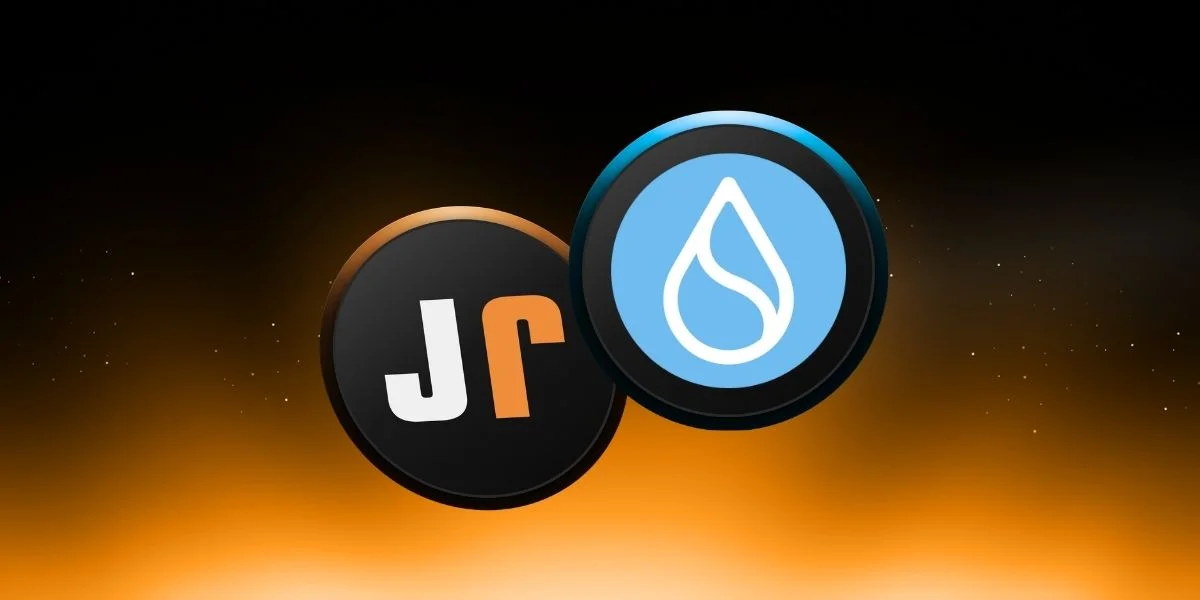
ZK Comment and Price Analysis August 4, 2025
ZK Current OutlookThe ZK chart clearly displays that the short-term falling wedge formation has broken upwards. The target of this formation, approximately around the $0.065 - $0.074 range, also coincides with the long-term falling trend line and horizontal resistance; that is, the price is about to complete the target of the formation and is approaching the multiple resistance zone.The coin is currently trading around $0.0510, and obviously the range between the levels $0.054 - $0.065 is forming a major resistance corridor. Thanks to the formation, the price could move up to this resistance level. However, it is too early to predict a strong breakout unless we see a price closing above the level at $0.065, since the price has been rejected here many times in the past. What’s more, this level coincides with the upper border of the descending channel and serves as a strong sell area.We should be following whether the price will hold above the level at $0.048 or not. Remember that this level is significant both as the previous resistance level and as a potential retest zone following the recent breakout. We can still expect the upward momentum to continue if the price finds support here. On the other hand, we should be following the support levels at around $0.046 and $0.041 below.The medium-term bullish scenario will be activated if the price closes above the level at $0.065 and the descending trend line gets broken. According to this scenario, the price could target the levels at $0.091, $0.13, and $0.19 respectively. Falling Trend Structure Summary:• The short-term falling wedge formation has broken upwards.• The target of the formation is the $0.065–$0.074 range.• This area also coincides with the long-term falling trend line and horizontal resistance.• Holding above $0.048 is critical for upward movement to continue• Resistance levels up: $0.054 → $0.065 → $0.074 → $0.091• Support levels below: $0.048 → $0.046 → $0.041• Mid-term targets in case of a breakout: $0.13 → $0.19These analyses, not offering any kind of investment advice, focus on support and resistance levels considered to offer trading opportunities in the short and medium term according to the market conditions. However, traders are responsible for their own actions and risk management. Moreover, it is highly recommended to use stop loss (SL) during trades.
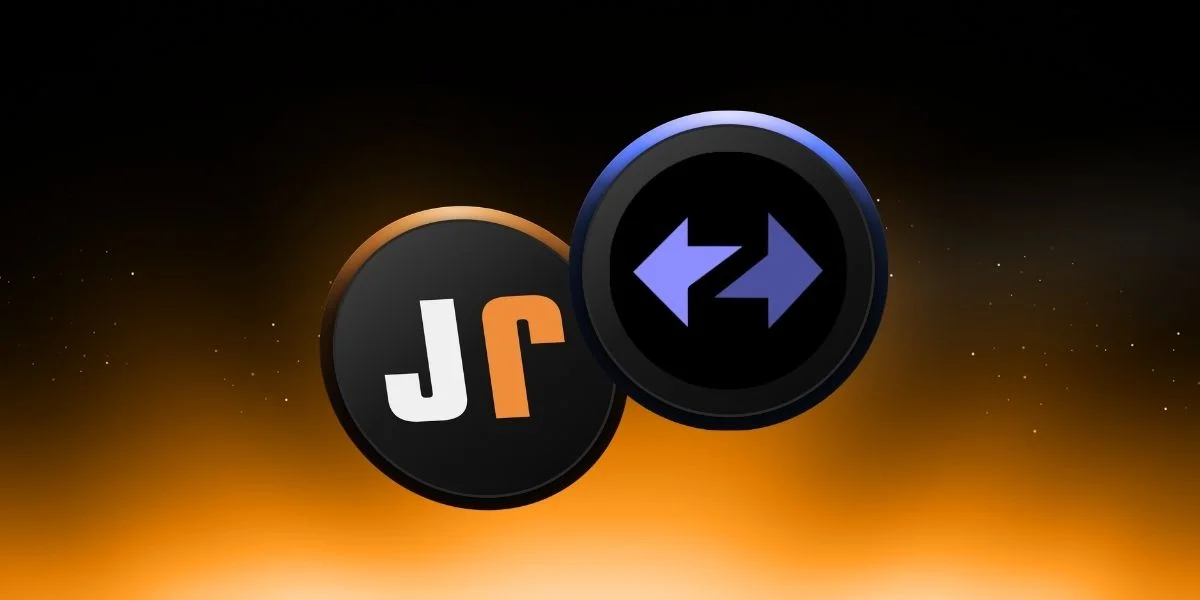
ZRO Comment and Price Analysis August 4, 2025
ZRO Technical AnalysisWhen we analyze ZRO, we see that the coin is trading within a broad horizontal channel pattern, which represents both an accumulation process and a potential for a new formation. The price is currently trading at around $1.73, very close to the lower border of the channel.The first resistance level to follow is $2.08 in the short term, which serves as both horizontal resistance and mid-border of the channel. The coin needs to break above the level at $3.35 for confirmation of the upward breakout. Unless this threshold is exceeded, we cannot say that the channel is broken upward; therefore, the level at $3.35 stands as a major resistance.We will consider the channel formation technically broken with price closings above the level $3.35, and then the target would be the level at approximately $7.00 – as long as the channel length.We should be following the levels at $1.65 - $1.46 and $1.33 as support levels respectively in case of a pullback. Remember that these levels are key levels within the channel. Summary:• Price: $1.73, close to the channel lower band• First resistance level: $2.08• Main breakout level: $3.35• Formation target on closes above $3.35: approximately $7.00• Intermediate resistance levels: $4.06 → $4.34 → $5.37• Support levels: $1.65 → $1.46 → $1.33These analyses, not offering any kind of investment advice, focus on support and resistance levels considered to offer trading opportunities in the short and medium term according to the market conditions. However, traders are responsible for their own actions and risk management. Moreover, it is highly recommended to use stop loss (SL) during trades.

XLM Comment and Price Analysis 3 August 2025
XLM/USDT Technical AnalysisWhen we analyze the XLM chart, we can clearly see that the long-standing descending channel pattern has broken upward. The price of the coin has surged to the level at $0.4785 with a strong upward momentum following the breakout we saw in early July. It is sad to see that the price has begun to pull back to the upper border of the channel due to the profit-taking recently. XLM Current Appearance It is seen that the price is currently trading around $0.3648; however, the range around the levels at $0.3774 – $0.3909 started to act as resistance as the price could not hold above this zone. We have the first short-term support level at $0.3416 in case of a fall scenario. Below this level, the price could test $0.3093–$0.2980 if the fall continues. We see that this price zone coincides with both the horizontal support zone and the previous breakout zone, which technically stands as a strong defensive line.It is possible that the price will recover back to the range around the levels at $0.39–$0.42 if buyers re-enter the market here. We need to see the price close above $0.4267 for the uptrend to continue.In terms of the formation, following the breakout of the channel, a new structure seems to be forming. Thus, it is important that we follow whether XLM will enter a trend again or a symmetrical structure.Based on the formation, a new structure tends to form after a channel breakout. Therefore, it's important to carefully monitor whether the price will re-enter a trend or a symmetrical structure.These analyses, not offering any kind of investment advice, focus on support and resistance levels considered to offer trading opportunities in the short and medium term according to the market conditions. However, traders are responsible for their own actions and risk management. Moreover, it is highly recommended to use stop loss (SL) during trades.
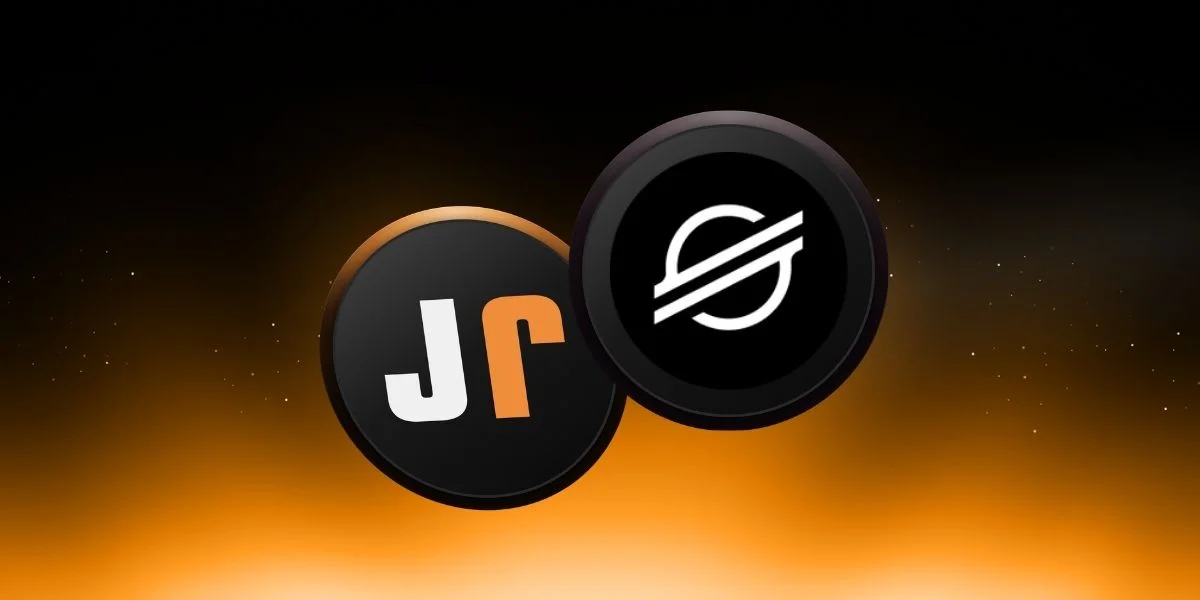
XRP Comment and Price Analysis August 3, 2025
XRP Technical AnalysisWe can clearly see the ascending channel pattern on XRP chart. The coin has moved around the upper half of the channel with a great uptrend since the month of June; however, due to the sell pressure recently, the uptrend has weakened, triggering an in-channel correction.XRP is currently trading around the level at $2.77, and we have the support range between the levels at $2.38 - $2.44 in case this sell pressure persists. This range is not only a support but represents a strong demand zone around the lower border of the channel. We technically expect that buyers will re-enter the market around this demand zone.In the event that XRP turns upwards, we will be following the levels at $2.93 and then the range at $3.13 - $3.42 as a resistance. Remember that these levels are crucial as they both worked as strong rejection area and also served as the support following the breakout.On the other hand, if XRP breaks below the support at $2.38, we may see a drop to the lower border of the channel, after which we should be following the next support levels at $2.18 and $1.90 respectively. Wide Rising Channel Structure Summary:Price: $2.77 (going through a correction within the ascending channel)Support zone: $2.38 – $2.44 (strong demand zone)Upward resistances: $2.93 → $3.13 → $3.42Downward risk: $2.18 → $1.90These analyses, not offering any kind of investment advice, focus on support and resistance levels considered to offer trading opportunities in the short and medium term according to the market conditions. However, traders are responsible for their own actions and risk management. Moreover, it is highly recommended to use stop loss (SL) during trades.

LTC Comments and Price Analysis August 3
LTC Short-Term Technical AnalysisWhen analyzing the LTC chart, we see that there is a falling wedge pattern forming in the short term. As we all know from experience, such patterns generally end up breaking above. LTC is currently trading at around $105, stuck near the upper border of the formation.If we see a clear breakout above the upper border of the falling wedge formation, the technical formation target is moved upwards by the height of the wedge, which, in this case, makes the range $118.77–$120.00 a possible target. Resistance levels to follow:• $109.38• $110.73• $114.14• $118.77–$120.00 (formation target)In case the price breaks downwards, support levels to follow are:• $102.09• $97.09• $91.31 (key support level)These analyses, not offering any kind of investment advice, focus on support and resistance levels considered to offer trading opportunities in the short and medium term according to the market conditions. However, traders are responsible for their own actions and risk management. Moreover, it is highly recommended to use stop loss (SL) during trades.

ENA Comment and Price Analysis August 2, 2025
ENA Technical AnalysisENA has recently seen strong upward momentum, swiftly surging from $0.32 to $0.54 in a short period. This rapid price rise suggests that investors should be careful as it is approaching the horizontal resistance zone of $0.66–$0.71, which also intersects with the long-term downtrend.In other words, the technical target of the uptrend and the intersection of the long-term trend are located at almost the same level—a situation which suggests that, at this strong resistance area, investors could realize profits and the market’s direction could be reshaped.Technical Outlook:Current price: $0.5453First intermediate resistance in short term: $0.60–$0.62Main resistance: $0.66–$0.71(the zone intersecting with downtrend line)If broken above, the next target: $0.90Support levels in case of a pullback:$0.48 → $0.43 → $0.40 Current Appearance At this level, volatility and profit-taking are highly possible; however, if this momentum continues, the short-term target could be the price range of $0.66–$0.71.This resistance area also stands for the breakout point of the downtrend. If this level is broken upwards, the rise can be expected to accelerate further. In such a scenario, prices above $0.90 might become technically possible in the medium term.These analyses, not offering any kind of investment advice, focus on support and resistance levels considered to offer trading opportunities in the short and medium term according to the market conditions. However, traders are responsible for their own actions and risk management. Moreover, it is highly recommended to use stop loss (SL) during trades.
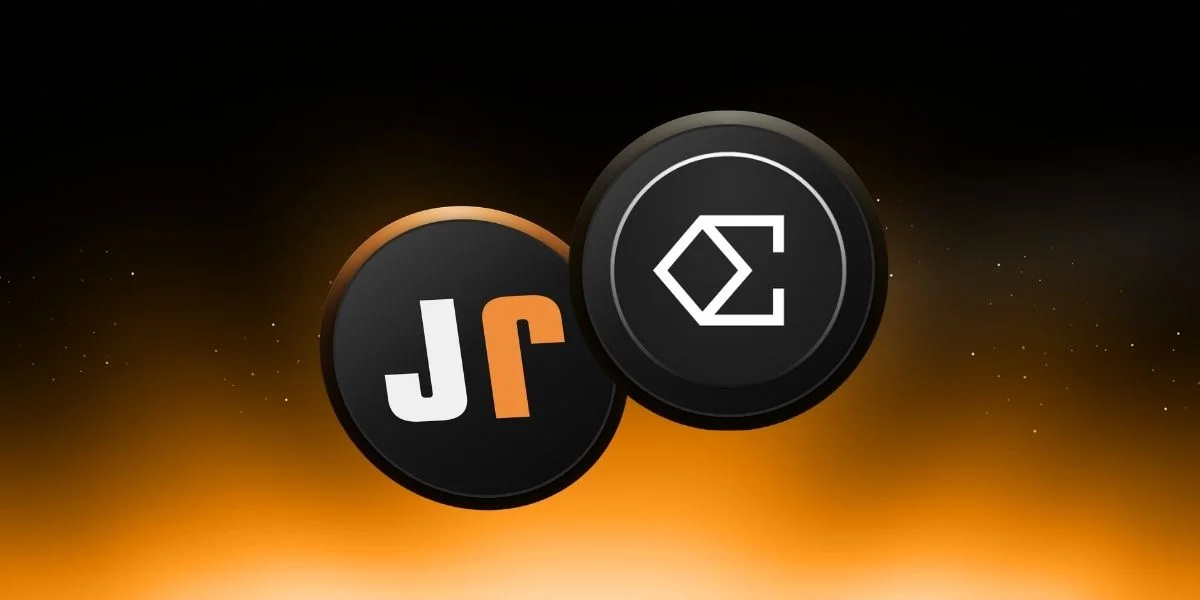
ALT Comment and Price Analysis 2 August 2025
ALT Technical Analysis Narrowing Triangle Structure The price of the coin is trading within a narrowing triangle formation, the upper border of which is around the range between $0.0388–$0.0398. This range also acts as the upper border of the triangle and a strong horizontal resistance. We have an intermediate support level of $0.0345, and the main support levels are $0.0311 and $0.0299 below.When the price breaks above the level of $0.0398, then we can consider the triangle formation complete to the upside, and the first price target will be the level of $0.0447. If this level also gets broken with strong momentum, the technical middle-term target will be the level of $0.0539.Unless this triangle pattern is invalidated, the price could fluctuate between support and resistance levels. However, if the price starts trading below the level of $0.0299, the triangle formation will be ruined, and we could test the price level of $0.0266 again.Key Levels:Resistance: $0.0388–$0.0398Support: $0.0345 → $0.0311 → $0.0299Formation breakout target: $0.0539These analyses, not offering any kind of investment advice, focus on support and resistance levels considered to offer trading opportunities in the short and medium term according to the market conditions. However, traders are responsible for their own actions and risk management. Moreover, it is highly recommended to use stop loss (SL) during trades.
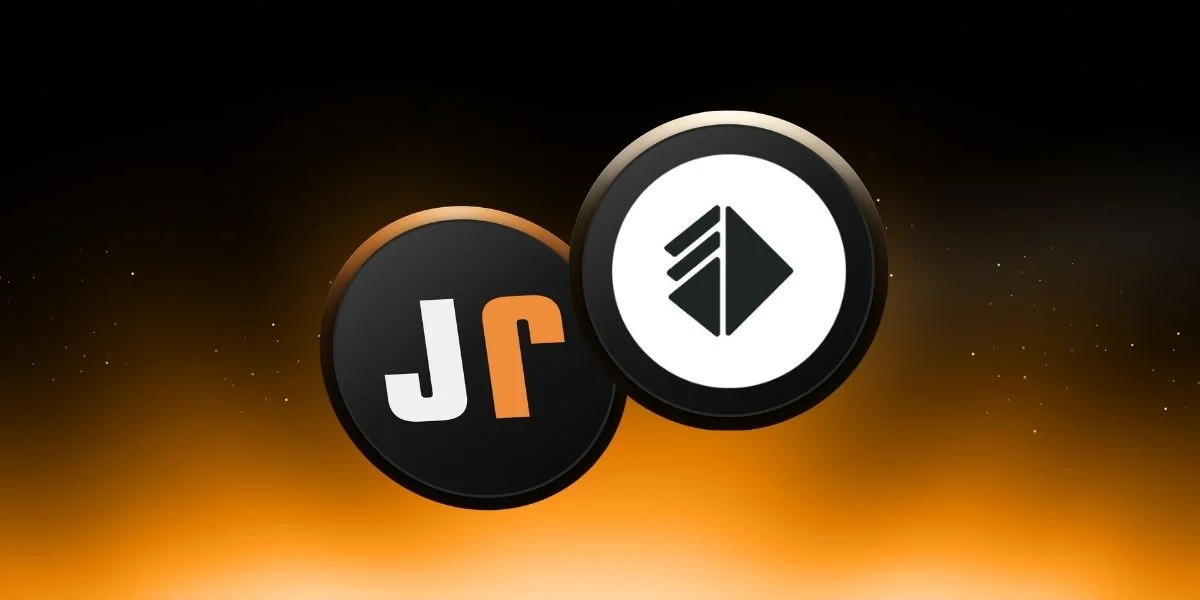
ARB Comments and Price Analysis August 2, 2025
ARB Technical OutlookAnalyzing the ARB chart on a daily timeframe, we can clearly see the wide falling wedge formation, the beginning of which is too old to be seen even on this daily chart—suggesting that the pattern is truly long-term.ARB is trading around the level of $0.4298, with a rise to $0.50 in the last candle. In terms of a price increase, this action was important, yet we saw selling pressure and the rise could not continue.Currently, the levels at $0.4516 and $0.5046 are standing as short-term resistances. A daily close above $0.5046, in particular, could clarify the falling wedge breakout. The technical formation target of $2.4250 could come back on the agenda in the mid-to-long term.We should be following the levels at $0.3900, $0.3558, and the lower border of the channel at $0.2849 in case of a pullback. Weekly Falling Wedge Formation Summary:Price: $0.4298, $0.50 was tested with the latest candleFormation: long-term falling wedgeIn case of a breakout, the target is $2.4250Short-term resistance levels are: $0.4516 → $0.5046 → $0.5475In case of a pullback, the supports to follow are: $0.3900 → $0.3558 → $0.2849These analyses, not offering any kind of investment advice, focus on support and resistance levels considered to offer trading opportunities in the short and medium term according to the market conditions. However, traders are responsible for their own actions and risk management. Moreover, it is highly recommended to use stop loss (SL) during trades.
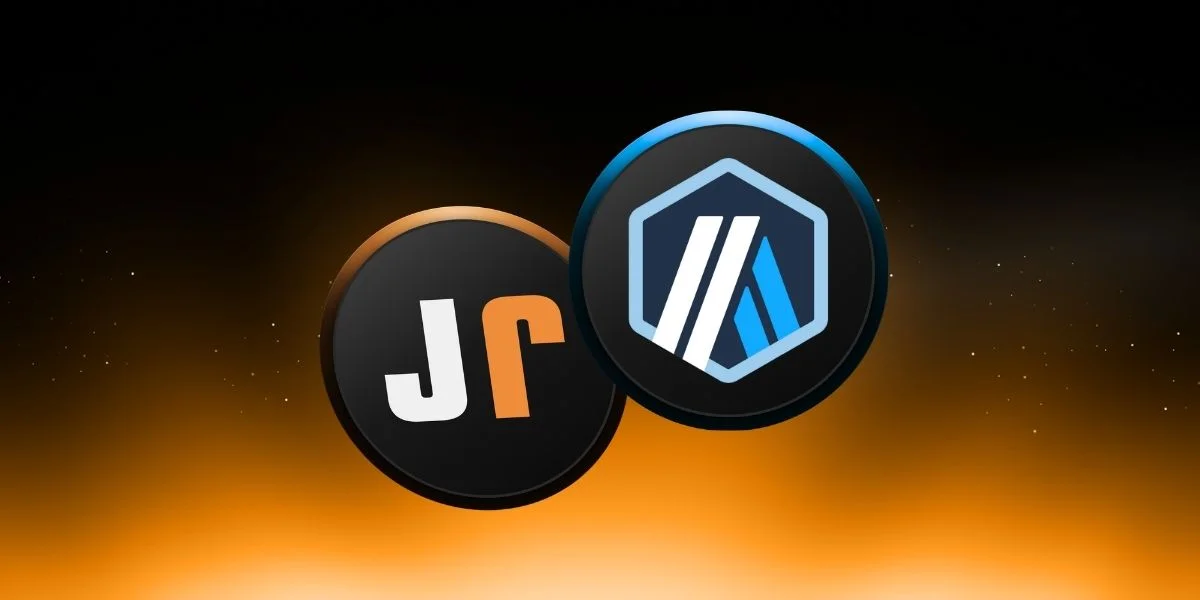
Trump's New Tariffs Hit Crypto: A Liquidation Wave Ensues
Crypto markets had a rather stressful start to August. US President Donald Trump's announcement of new tariffs and the strengthening of the dollar unsettled investors. A sell-off in global markets saw cryptocurrencies bear the brunt of this pressure. The global crypto market capitalization fell approximately 4% to $3.74 trillion, with more than 183,000 investors liquidating and closing positions totaling $758 million.Bitcoin hits $114,000, Ethereum drops below $3,600Bitcoin's price fell to $114,200 following Trump's statements. Although it quickly recovered to above $115,000, volatility remained high. Ethereum (ETH), despite being one of last month's biggest gainers, traded in lockstep with BTC, falling sharply from $3,860 to $3,600. During this period, the dollar index (DXY) rose above 100, its highest level since May. This rise was supported by the global liquidity squeeze and the search for safe havens. According to CoinGlass data, this selling wave in the last 24 hours resulted in a total of $758 million in liquidations. Long positions comprised 93% of these liquidations, or $706.6 million. The largest single liquidation was a $13.79 million ETHUSD_PERP position on Binance. This suggests that many investors expected the bull run to continue in August, but the markets moved in the opposite direction.According to market data, Bitcoin recorded profits of between $6 billion and $8 billion at the end of July. This figure is on par with the peaks in March and December 2024 and indicates the third major wave of profit-taking in this bull cycle. New large investors (whales) are seen selling, particularly in areas above $120,000. Bitcoin is trading at $115,035 at the time of writing, while the fear and greed index is neutral.Altcoins are losing ground: DOGE, ADA, and SUI crashedAltcoins' losses have been even more severe. XRP and Solana prices have fallen by more than 7%, while Cardano (ADA) has lost 8% and SUI by 10%. Dogecoin (DOGE) fell 9% to $0.205. Ethereum, the largest altcoin, is trading at $3,627 with a 6% loss.CryptoQuant reports a boom in altcoin futures trading. While Bitcoin dominance has been flat, futures volumes for coins like Ethereum have increased significantly. ETH is up 170% from its recent lows and is only 23% from its peak. Meanwhile, BTC transactions below $10,000 have increased by 10% in the past month, indicating a resurgence of retail investor interest.Trump's new tariffs: Tensions rising in the global economyTrump's new tariff announcements have further escalated tensions in global trade. The US's imposition of a 10% minimum tariff on all countries, along with a 15% additional tax on countries with a trade surplus, has shaken markets. These developments have impacted not only cryptocurrencies but also traditional finance. S&P 500 futures fell nearly 1% Friday morning. Amazon shares also fell 8% in premarket trading after the earnings report fell short of expectations.The failure of major companies like Microsoft and Meta to satisfy investors despite their strong balance sheets has further weakened risk appetite. Meanwhile, today's US employment data is also critical for markets. Only 100,000 new jobs are expected in July, and the unemployment rate is projected to rise to 4.2%.Trump's aggressive economic moves and the Fed's decision to hold interest rates steady have left markets mired in uncertainty. Cryptocurrency investors are currently caught between two fires: concerns about inflation and interest rate policy on one side, and the re-escalation of global trade wars on the other. In the short term, volatility is expected to remain high, prompting cautious investment behavior.

Investment Firm Holds $450 Million SUI Treasury
While corporate treasuries have been increasingly popular in the crypto markets recently, Mill City Ventures III has emerged with a noteworthy strategy. The company announced the establishment of an official SUI treasury with a $450 million private equity raise. This move marks a first in the market as the only treasury strategy directly supported by the Sui Foundation.Mill City has currently added a total of 76,271,187 SUI tokens to its portfolio at an average cost of $3.6389. Initial purchases were made through over-the-counter (OTC) agreements and in-kind contributions with the Sui Foundation. The company announced that further SUI acquisitions will be made on the open market and that this accumulation strategy will continue."In partnership with the Sui Foundation, Mill City is operating the only crypto treasury strategy in the market with official foundation support." 98% of private capital deployedMill City operates as a company offering short-term non-bank lending services and specialized financing solutions. However, the company's latest move brings it directly into the digital asset ecosystem. Approximately 98% of the private capital raised will be used for the acquisition of SUI and the management of this treasury.Investors participating in this private equity round include prominent names in the crypto world: Big Brain Holdings, Galaxy Digital, Pantera Capital, M2, Electric Capital, and GSR have become part of this structure. Statements from Galaxy CEO Mike Novogratz, in particular, highlight the strategic vision behind this move:“Mill City offers public investors clean, liquid, and institutional-grade access to the digital asset ecosystem. Backing the treasury with SUI and combining it with experienced management creates a strong foundation for long-term growth.”As a result, not only BTC and ETH but also next-generation Layer-1 blockchains are now on the radar of institutional investors. Sui stands out as a Layer-1 chain developed by Mysten Labs and powered by the proprietary Move programming language derived from Meta's (formerly Facebook) blockchain initiative. Standing out with its high scalability and transaction efficiency, Sui could herald a new era with its integration into enterprise-level treasury structures.At press time, the SUI price was $3.4 and has fallen 3% in the last 24 hours.

SOL Commentary and Price Analysis July 31, 2025
SOL Technical AnalysisWhen analyzing SOL on a daily time frame, we can clearly see that the coin has been trading within an ascending channel pattern for a long time. In a wide perspective, the lower and upper borders of the channel still work properly. However, the price seems to be stuck within a narrowing range in the middle zone of this channel.It is clear on the chart that SOL tested the horizontal support level at $167.87, which, at the same time, intersects with a minor falling trend line. Thus, this level seems to be a strong support area for SOL, which is currently trading around $176.78 and is struggling to hold above it.We could expect the upward movement to carry on if the price can hold above the level at $167. According to this prediction, we should be following the levels at $191.89, $201.24, and then $233.18 as possible targets ahead. The upper border of the channel corresponds to $300, and this level can be considered a medium-term target.We have the first strong support at $167.87 in the event of a pullback. Below it, we should be following the range between the levels $146.86–$140.03 as a key support zone. Moreover, if we see a deeper correction, the price could test the range $121.00–$122.00, which is a strong low level. Rising Channel Structure Summary:• Price: $176.78, trading within an ascending channel structure• Horizontal resistance: $167.87 was broken, it is trying to hold above it• Upside targets: $191.89 → $201.24 → $233.18 → $300• Support levels: $167.87 → $146.86 → $140.03 → $121.00Channel upper and lower borders are still valid, trend structure is maintained.These analyses, not offering any kind of investment advice, focus on support and resistance levels considered to offer trading opportunities in the short and medium term according to the market conditions. However, traders are responsible for their own actions and risk management. Moreover, it is highly recommended to use stop loss (SL) during trades.
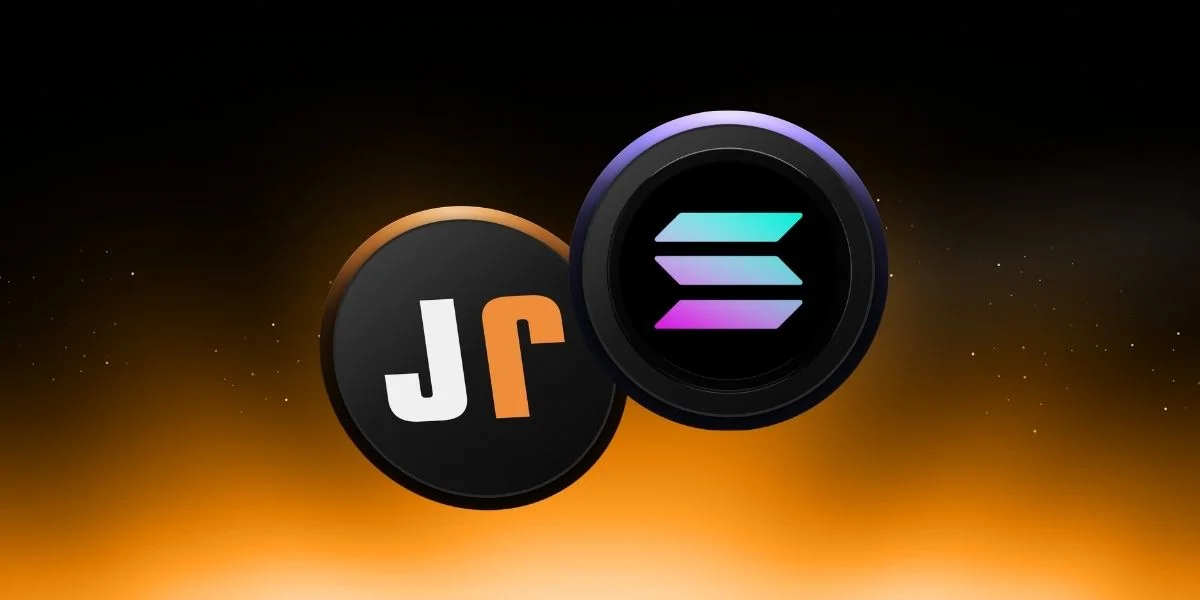
AVAX Comment and Price Analysis July 31, 2025
AVAX Technical OutlookAnalyzing AVAX on a daily time frame, it is clearly seen that the coin has been trading within a wide descending channel pattern for a long period of time. So far, the lower, mid, and upper borders of this falling channel have worked properly and are still valid, continuing to give direction to the price.AVAX is currently trading at the mid-border of the mentioned channel. The range between the levels at $22.40–$23.80 is crucial as this range works as a horizontal support and as a previous reversal zone. The price is trying to bounce from this zone. If it can hold above this area, upside potential could be kept.We see that the upper border of the channel and the resistance zone intersect at $30.20–$32.90, which could serve as a strong resistance level in the next uptrend. If this zone gets broken with huge momentum, the descending channel formation will also be broken above, and a medium-term positive trend will probably start then.We should be following the range between the levels $20.00–$18.74 as the first support line in case of a possible drop scenario. If the price closes below this zone, then it can pull back to the lower border of the channel formation. Falling Channel Structure Summary:• Price: $22.97, trading around the middle border within the descending channel• Support: $22.40 – $23.80 (holding above it is positive)• Resistance: $30.20 – $32.90 (overlapping the upper border of the channel)• Lower support: $20.00 → $18.74The price is trading within the falling channel. However, as long as the price holds above $22, positive expectations remain. The upper border of the channel is a key area for a trend reversal.These analyses, not offering any kind of investment advice, focus on support and resistance levels considered to offer trading opportunities in the short and medium term according to the market conditions. However, traders are responsible for their own actions and risk management. Moreover, it is highly recommended to use stop loss (SL) during trades.
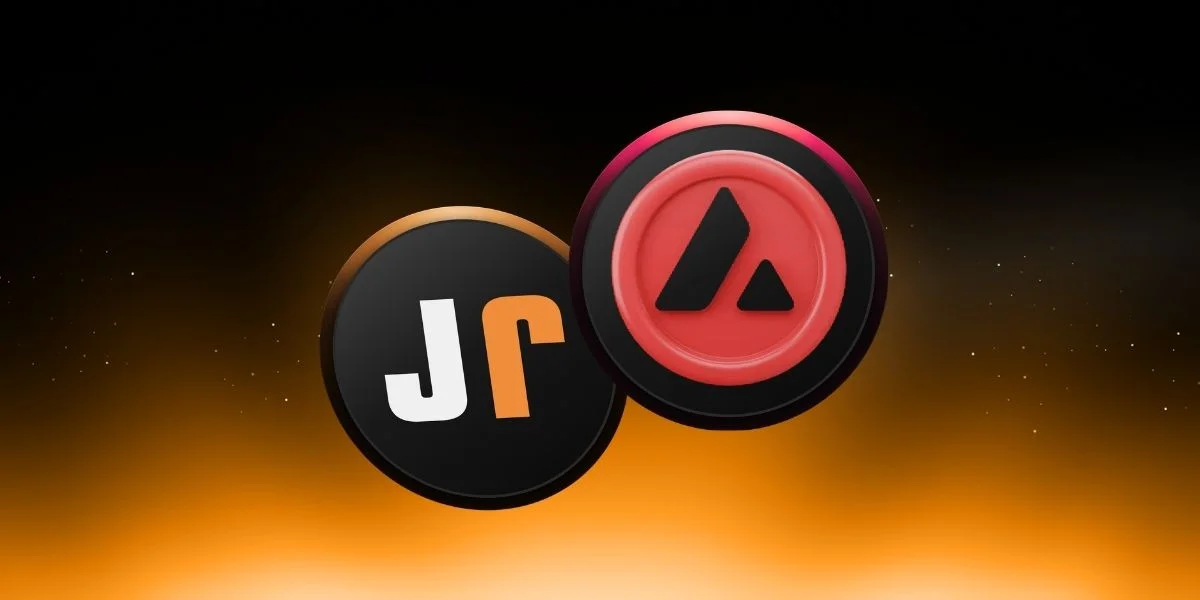
What is Sei (SEI)?
Speed, efficiency, and user experience are more crucial than ever in the crypto world. Building on these very needs, Sei (SEI) stands out as a high-performance layer-1 blockchain network built from the ground up for decentralized finance (DeFi) applications. Specifically targeting order-book blockchain applications, the Sei network stands out with its capacity of up to 20,000 transactions per second and a block time of approximately 300 milliseconds. Built on the Cosmos SDK, this network offers a secure and fast infrastructure thanks to Tendermint consensus. The development team aims to bring the speed and efficiency needs of traditional financial markets to the blockchain, making Sei an ideal platform for DeFi projects, NFT applications, and on-chain games. The SEI token, the network's native cryptocurrency, is actively used in transaction fees, staking, and governance processes. If you're wondering, "What is Sei?", "What is Sei coin?", or "What is Sei token used for?" If questions like these are on your mind, in this guide, we will explore in detail what the Sei network is, who owns Sei coin, what its release date is, and what its future holds.Definition and Origins of SeiSei (SEI) is a high-speed and powerful layer-1 blockchain network specifically developed for decentralized finance (DeFi) applications. Its native cryptocurrency is also commonly known as SEI coin. Built on the Cosmos SDK infrastructure, Sei incorporates a specialized version of the Byzantine Fault Tolerant (BFT) consensus engine called Tendermint Core. Thanks to this architecture, blocks can be generated in a very short time of approximately 300 milliseconds, and the network can theoretically offer a transaction capacity of up to 20,000 transactions per second. This entire system is specifically optimized for decentralized exchanges and derivative platforms operating on an order book model. Sei's development team aimed to create a brand new solution by combining the speed and efficiency of traditional finance with blockchain technology. This has led to the emergence of a DeFi network that offers a robust and effective infrastructure for both individual users and institutional projects.As a blockchain focused on DeFi, the Sei network was developed to address long-standing challenges in the crypto world, such as scalability and speed, from a fresh perspective. The "exchange trilemma"—the difficulty of balancing decentralization, scalability, and capital efficiency—a common problem particularly encountered in platforms with high transaction loads, such as decentralized exchanges, was one of the primary motivations for Sei's creation. Combining high transaction throughput with low latency was a key goal in the network's design.To achieve this goal, Sei has been equipped with various technical improvements to the block generation and processing processes. In particular, thanks to a special architecture called Twin-Turbo consensus, the network combines both intelligent block propagation and optimistic block processing. This allows validators to process transactions much faster, significantly reducing block times. As a result, the Sei network achieves a very fast and efficient blockchain structure that can respond in milliseconds, not seconds. SEI network Because Sei is built on the Cosmos SDK, it inherits its security and network structure from the Tendermint consensus system. However, the block time, which typically reaches around 6 seconds in traditional Tendermint, has been reduced to milliseconds thanks to Sei's innovative architecture. This difference is one of the clearest indicators of the network's speed. The project was founded in 2022 under the umbrella of Sei Labs, established in California. The team includes highly experienced individuals: Jayendra (Jay) Jog, a software developer who previously worked as an engineer at Robinhood, and Jeffrey Feng, with his investment banking background at Goldman Sachs, brings strategic vision to the project. Dan Edlebeck, known for his work in the Cosmos ecosystem, also serves as the founding team.Throughout 2022, the project took shape from both a technical and community perspective. The development team launched the first testnets, established the technical infrastructure, and grew the community with early-stage participants. The Sei mainnet (v1) then went live in 2023. At the time, major investors such as Multicoin Capital, Delphi Digital, and Coinbase Ventures supported the project, enabling Sei to reach a wider audience. Developed open-source from the outset, the network adopts the community governance approach unique to the Cosmos ecosystem. This means SEI token holders have a say in important network decisions and can vote on protocol changes.Sei's History: Key MilestonesThe Sei network has come a long way in a short time since 2022. The development team has achieved steady growth not only technically but also in the community. Below, you can see the key milestones, from Sei's initial testnet to its listing on major exchanges, from EVM compatibility to ecosystem expansion:2022: The Sei Network's first testnet phases began. During this period, incentivized testnets like "Atlantic" and the community program "Seinami" helped establish both early adopters and a developer ecosystem. In August, Sei Labs received a $5 million seed investment, significantly accelerating the project. 2023: After intensive testing, Sei's mainnet, Sei v1, went live on August 15, 2023. The network's integration with the mainnet and Cosmos Hub was completed, bridges were activated, and users were now able to stake SEI tokens.August 2023: The SEI token reached a wide audience by being listed on leading exchanges such as Binance, Coinbase, and Bybit. With these listings, Sei, previously known only within the technical community, now entered the radar of a wider user base.2024: The development team announced Sei's next version, Sei v2. This new version integrates EVM (Ethereum Virtual Machine) support into the network and further enhances its parallel transaction processing capabilities. The public testnet went live in early 2024, with the mainnet update targeted for completion by mid-year. Thus, Sei took a significant step toward becoming the "first parallel EVM blockchain." The differences between SEI v1 and v2 can be illustrated as follows:FeatureSei v1Sei v2Release DateAugust 20232024 (testnet: Q1, mainnet: planned for Q2/Q3)Consensus MechanismTendermint CoreOptimized Tendermint + Parallel Execution EngineBlock Time~300 millisecondsSame (more consistent performance via optimizations)Transaction Throughput (TPS)~20,000 (theoretical)Similar TPS, but more efficient with parallel processingParallel Execution CapabilityLimited (basic level)Yes – full parallel execution supportedEVM CompatibilityNoYes – can run Ethereum smart contractsVirtual Machine (VM)CosmWasmCosmWasm + Ethereum Virtual Machine (EVM)Developer ExperienceCosmos ecosystem focusedCompatible with Ethereum developer toolsOrder Book Application SupportOn-chain Central Limit Order Book (CLOB)On-chain CLOB (enhanced logic + EVM compatibility)Frontrunning ProtectionFrequent Batch Auction (FBA)FBA + improved transaction orderingIBC (Cosmos Interoperability)SupportedUnder debate – proposal to remove Cosmos support submitted2025: The Sei ecosystem expanded rapidly. Many projects in areas such as DeFi, NFTs, and blockchain-based games became active on Sei. For example, Astroport became one of the first decentralized exchanges to launch on the network, while well-known protocols like Sushi also integrated into the Sei network. More than 200 projects operated on Sei, and the total asset value locked (TVL) exceeded $500 million.Why Is Sei Valuable?After exploring all the technical details about the Sei network, the most natural question that comes to mind is: "So why do all these features make it so special?" This is where the many details that distinguish Sei from other layer-1 blockchains, both technically and in terms of user experience, come into play. Equipped with innovations such as high transaction speed, a parallel transaction architecture, and a built-in order book infrastructure, Sei offers a strong foundation not only for DeFi projects but also for a wide range of applications, from NFTs to on-chain games. Below, let's examine each of the fundamental building blocks that make Sei so valuable. High speed and efficiencySei reduces block generation time to approximately 0.3 seconds, completing transactions almost instantaneously. It can theoretically reach an impressive 20,000 transactions per second. This speed is a significant advantage, especially for high-frequency traders and high-throughput applications. For comparison, in terms of finality time, it is almost twice as fast as next-generation chains like Sui and 1.5 times faster than Aptos. Comparison of SEI and other cryptocurrencies in terms of expiration time. Source: Maple Finance Parallel Transaction ProcessingThe Sei network features parallel execution. When appropriate, it can process transactions simultaneously, in parallel. Only transactions affecting the same data are executed sequentially. This reduces transaction times on the blockchain and increases overall transaction throughput. Thanks to this structure, applications running on Sei deliver smoother and more efficient results, as if they were running on a multi-core computer.Order Book InfrastructureSei features an embedded order matching engine at the protocol level. This allows decentralized applications to operate directly on-chain using a central limit order book (CLOB) model. Instead of AMM-based structures like other chains, real-time buyer and seller orders are matched directly on-chain. This reduces both slippage and temporary liquidity issues. It also makes Sei much more resilient to MEV-based sandwich attacks. Compared to other major DEXs, SEI can be compared as follows:Feature / ProjectSei (Sei DEX)Serum (Solana)dYdX (StarkEx v3)InjectiveChain TypeLayer-1Layer-1Layer-2 (StarkEx)Layer-1 (Cosmos SDK)Order Book TypeOn-chainOff-chainOff-chainOn-chainBlock Time~300 ms~400 ms~600 ms~1 secondTPS (Transactions per Sec.)~20,000~50,000~9,000~10,000+Frontrunning ProtectionYes (FBA)Partial (off-chain risk)Yes (off-chain controlled)Yes (frequent auction)Parallel Execution SupportYesYesLimitedYesEVM CompatibilityYes (via Sei v2)NoNoNoStructure Preventing FrontrunningThe Sei network prevents frontrunning attacks by processing orders in bulk at the end of a block. This approach is supported by a system called "Frequent Batch Auction (FBA). This prevents any bot or validator from gaining unfair advantage by taking positions before market entry. Because all orders are matched simultaneously at a single price, trading occurs on a much fairer basis.Full Compatibility with the Cosmos EcosystemBecause Sei is part of the Cosmos ecosystem, it supports the IBC (Inter-Blockchain Communication) protocol. This allows Sei to communicate directly with other blockchains, such as Osmosis or Cosmos Hub, and transfer assets. This interoperability allows assets mined on Sei to be easily moved to other chains. It can also be seamlessly used with popular Cosmos wallets like Keplr. Cosmos/SEI compatibility However, it's worth noting that, according to a community proposal that emerged in May 2025, one of the Sei developers proposed discontinuing the network's Cosmos support. The goal of this proposal is to reduce the technical complexity created by the current CosmWasm + EVM architecture and simplify the developer experience by making Sei only compatible with Ethereum. If this transition occurs, Sei will only support EVM-based transactions, and Cosmos features will largely be shelved. However, according to statements from Interchain Labs, Sei will technically remain Cosmos-based, and some core features (e.g., staking and governance) will remain available.SEI Token UsesThe SEI token, the network's native asset, plays a crucial role in both the operation of the technical infrastructure and maintaining economic order. SEI can be used to pay transaction fees and make transfers at low cost. Users can stake their tokens to support validators, contribute to the security of the network, and earn rewards in return. It's also possible to have a say in governance processes; SEI holders have the right to vote on protocol updates or significant changes. It can also be used as collateral in DeFi applications and provide liquidity. SEI is also among the top 100 coins by value. SEI price since launch A robust and balanced token economyThe total supply of the SEI token was set at 10 billion units. Approximately 18% of this supply (1.8 billion SEI) entered circulation in the initial phase. To ensure a community-focused launch, the project distributed 3% of the total supply as an airdrop to testnet users and select chain communities. The remaining supply was allocated to the development team, investors, ecosystem incentives, and community reserves. This balanced distribution ensures network security and creates a sustainable economic structure for long-term growth.Who is the Founder of Sei?Sei Network was founded in California in 2022. The team behind the project includes three experienced individuals from the traditional finance and software worlds: Jayendra “Jay” Jog, Dan Edlebeck, and Jeffrey Feng. Jay previously worked as a software engineer at Robinhood, and Dan is one of the founders of Exidio, a decentralized VPN project operating within the Cosmos ecosystem. Jeffrey Feng, with his background at Goldman Sachs, made a strong contribution to the project in terms of financial strategy. By combining technical knowledge and financial vision, the trio aimed to create a brand-new blockchain infrastructure under the Sei Labs umbrella.From its inception, the project chose a different direction from traditional centralized structures. Its governance approach is based on community participation. Because the Sei network is developed with open source code, developers from around the world can contribute to the project. Decisions regarding the network's future are made by the votes of SEI token holders. This means users become part of a community that not only transacts on the network but also has a voice. This makes Sei an ecosystem that grows alongside its users.The dedicated efforts of both the founding team and the community have played a significant role in Sei's success to this point. Since the mainnet launch, the system has been operating stably, and the development team is constantly taking new steps to further improve performance. Equipped with innovations such as high speed, parallel transaction capabilities, and an order book infrastructure, Sei opens the door to many new projects not only in terms of technical aspects but also with the opportunities it offers. More applications in areas like DeFi, NFTs, and gaming are expected to be deployed on the Sei network in the coming period. Considering all these developments, a very promising picture emerges for the future of Sei coin.Frequently Asked Questions (FAQ)Below are some frequently asked questions and answers about SEI:What is the Sei network and how does it work?: The Sei network is a high-speed blockchain platform built on the Cosmos SDK as its technical infrastructure and uses the Tendermint BFT consensus mechanism. The network operates according to the Delegated Proof-of-Stake (DPoS) model; that is, specific validators verify transactions with SEI tokens staked by users. Thanks to special improvements called Twin-Turbo consensus, transactions are finalized in a very short time of ~300–400ms, and efficiency is maximized with parallel processing. In short, the Sei network is a fast and scalable blockchain secured by validators worldwide.What is the SEI token used for?: The SEI token is the native cryptocurrency of the Sei network and is used for various purposes. First, gas fees for transfers and smart contract transactions on the network are paid in SEI. Users can also contribute to the security of the network by staking their SEI (delegating it to a validator on the network) and earn rewards in return. The SEI token is also part of the governance mechanism; token holders have a say by voting on important network updates or protocol changes. Additionally, SEI can be used as collateral in some DeFi protocols and plays a role in paying transaction fees on decentralized exchanges built on Sei.What are the differences between Sei and chains like Solana and Sui?: While Sei shares a similar goal with high-performance chains like Solana and Sui—to provide a fast and scalable infrastructure—their technical approaches differ. Solana is a singleton chain running on a Proof-of-History mechanism and is known for processing thousands of transactions per second; however, Solana is not directly compatible with the Cosmos ecosystem. Sui, on the other hand, is a new blockchain network that uses the Move programming language and offers object-oriented parallel processing capabilities. Built on the Cosmos SDK, the Sei network combines both Tendermint-based BFT security and parallel processing capabilities. Sei not only achieves speeds as high as Solana, but also offers a protocol-level order book infrastructure, making it particularly prominent in trading applications. Furthermore, thanks to its IBC compatibility, Sei can communicate directly with other blockchains, unlike Solana and Sui, giving Sei a significant advantage in inter-ecosystem interactions.Is the Sei network Cosmos-based?: Yes. The Sei network is built on the Cosmos SDK and uses the Tendermint BFT consensus algorithm. Therefore, it is technically part of the Cosmos ecosystem. Indeed, thanks to the Inter-Blockchain Communication (IBC) protocol, Sei can communicate and transfer assets in a manner compatible with other Cosmos-based chains.What types of applications are being developed on the Sei network?: Decentralized finance (DeFi) applications are the most frequently developed on the Sei network. Decentralized exchanges (DEXs) and derivatives trading platforms that use an order book model are particularly prominent. For example, Astroport launched as the first major DEX on Sei. Furthermore, thanks to the network's high transaction capacity, NFT marketplaces and blockchain-based gaming projects are also emerging within the Sei ecosystem. Transactions like in-game asset buying and selling or NFT minting can provide users with a seamless experience thanks to Sei's fast infrastructure.How to stake SEI: To stake SEI, you first need to transfer your SEI tokens to a supported wallet (e.g., a Cosmos-compatible wallet like Keplr). Then, you can delegate by selecting one of the network's validators through your wallet app or the Sei network's block explorer. This means you lock your SEI assets to a validator of your choosing and delegate your voting rights to them. This way, you both secure the network and earn staking rewards. However, keep in mind that staked assets on Cosmos networks typically have an unbonding period of 14–21 days for withdrawal; you cannot immediately unstake and spend your tokens during this period.For more information on sei and high-speed blockchain technologies, follow our JR Crypto Guide series.
